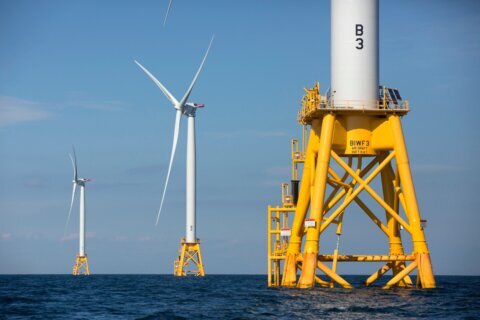Wondering when you can enjoy that pumpkin spice latte without judgment that it’s too early (or too hot) for the perennial autumn beverage? It might come sooner than you think, according to the Farmers’ Almanac.
Farmers’ Almanac editor Peter Geiger said have no fear, fall is near in the D.C. area.
It may feel like it’s still August — especially as new record-high temperatures were set on Labor Day — but Geiger said, “Of course you’re going to have a fall in D.C.”
So when can you put on that wool sweater and take a crunchy walk through gold and red leaves?
“You have to look for about a month from now to start to get the real fall-like weather, but I think you’re going to get it,” Geiger said.
The average temperature for the month of September around the D.C. area is about 72 degrees.
“Well, the overall aspect of dealing with the summer months, August and September, we’re going to have warm temperatures in general,” National Weather Service meteorologist Kevin Witt told WTOP.
Climate, on the other hand, is a bit trickier.
“You have to look at it on a large-scale perspective. So we may see these records broken in another point in time, sometime in the next couple of years,” Witt said.
Geiger gives a word of caution of being careful what you wish for because the Farmers’ Almanac’s winter forecast for the region could have you wishing it was summer all over again.
The almanac, which has been in publication since 1818, is predicting snow for the area.
“We’re putting the ‘brrr’ back into winter. We think it will be cold; you’ll get some snow,” Geiger said, adding that it won’t be a huge amount.
For those of you living along the Interstate 95 corridor from Washington to Boston, the prediction is lots of rain/sleet and snowstorms to contend with.
The reason for the change from last year’s warm winter is an El Niño, an unusually high-water temperature off the Pacific coast of South America.
There are indications that an El Niño is brewing during the latter half of 2023 into the winter of 2024.
“If we consider that alongside our tried-and-true forecast formula, it means that cold temperatures should prevail throughout the country and bring snow, sleet, and ice,” the Farmers’ Almanac said.
The Farmers’ Almanac’s long-range predictions are based on a formula that spans years. It’s both a mathematical and astronomical formula that takes into consideration factors, such as sunspot activity, position of the planets and tidal action caused by the moon.
WTOP’s Abigail Constantino and Mike Murillo contributed to this report.








